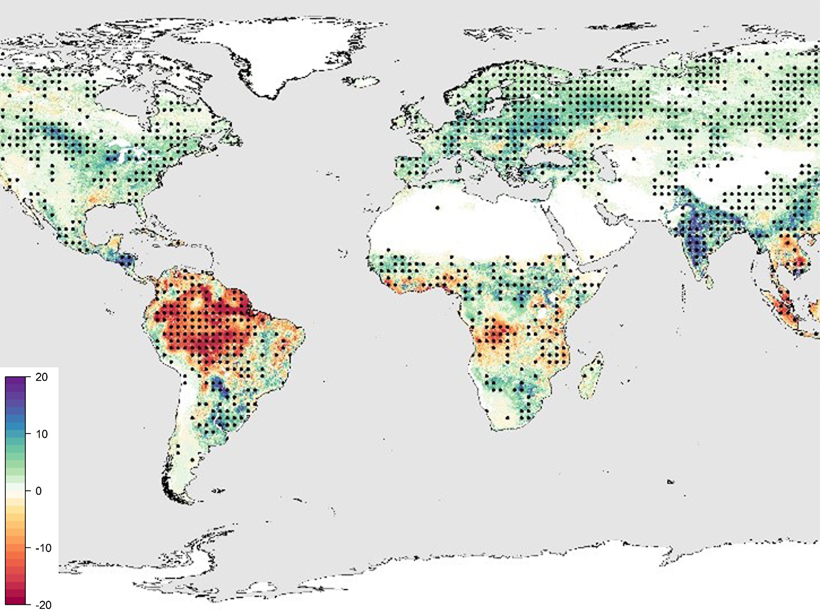Source: AGU Advances
Satellite observations over the last nearly four decades have now captured changes in plant photosynthetic activity tied to the increased greenness, concurrent with increasing atmospheric CO2. Using an improved light use efficiency model and hydrometeorological data (e.g., air temperature, vapor pressure deficit, and root zone soil moisture), Madani et al. [2020] estimated the evolution of spatially varying gross primary productivity (GPP) globally. The results show higher GPP in the mid and high latitudes, counterbalanced by accelerated decreases at lower latitudes (10°N–10°S), including the Amazon, Congo, and Southeast Asia rainforests.
The increases in GPP at higher latitudes result from warmer temperatures and longer growing seasons, a negative climate feedback. The decreases in the tropics’ GPP result from increased atmospheric water stress, further enhanced by reductions in soil moisture during episodic drought, a positive climate feedback. The potential emergence of water stress at higher latitudes could potentially switch regions of negative climate feedback to positive feedback, accelerating the global downward trend in carbon uptake by plants in the future. This study demonstrates the strong coupling between the water and carbon cycles and highlights water stress controls of the terrestrial carbon sink.
Citation: Madani, N., Parazoo, N. C., Kimball, J. S., Ballantyne, A. P., Reichle, R. H., Maneta, M., et al. [2020]. Recent amplified global gross primary productivity due to temperature increase is offset by reduced productivity due to water constraints. AGU Advances, 1, e2020AV000180. https://doi.org/10.1029/2020AV000180
—Ana Barros, Editor, AGU Advances
Text © 2020. The authors. CC BY-NC-ND 3.0
Except where otherwise noted, images are subject to copyright. Any reuse without express permission from the copyright owner is prohibited.

